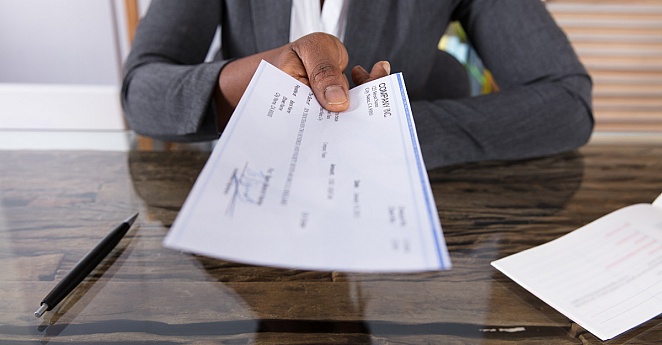Emergency Cash Solutions for the Unemployed: Steps You Can Take Today
The sudden loss of a paycheck can create immediate and overwhelming financial strain. Most Americans have little room between their income and spending on necessities like rent, utilities, and groceries to accommodate a brief lapse in pay. When the checks stop coming, the need to meet financial obligations rapidly escalates, while bills for vital needs such as housing, medical care, and education begin accumulating.
Unemployment usually occurs suddenly, after a termination or a company closure. Whatever the cause, the challenge remains: securing enough cash to navigate the uncertain times ahead.
Those unprepared for the financial impact of unemployment and unable to rely on their friends or family need quick solutions. If you are at the point where you have no income and need money now, consider emergency payday loans. Your approach will depend on how long you think you will be unemployed and/or the immediacy of your needs. From exploring options for short-term loans to identifying community resources, your approach will depend on how long you think you will be unemployed.
First Step: Assess Your Financial Situation
If you have no income and need money now, consider your financial situation first. This will help you prioritize your most urgent needs.
First, identify your critical expenses, such as rent, utilities, basic groceries, and other non-negotiable costs necessary for your well-being. Knowing these will help you prioritize what matters and cut out as much extra spending as possible during this difficult time.

Next, create a short-term budget indicating your income, expenses, and available resources. This budget will be an effective tool for managing your finances. It will give you a vivid picture of where your money is going and help you avoid overspending.
6 Ways to Get Emergency Funds When You're Out of Work
Emergency cash for the unemployed can come from various sources, many of which do not require the approval of a loan officer or lending institution manager. How you get by during an unemployment stint is limited only by your imagination.
1. Explore Government Assistance Programs
There are several government assistance programs here to help you in your time of need.
- Unemployment Insurance (UI): Unemployment Insurance provides temporary financial assistance to qualified workers who become unemployed through no fault. Each state operates its own UI program and has its own set of eligibility requirements and benefit amounts.
- Supplemental Nutrition Assistance Program (SNAP): SNAP, commonly called food stamps, is a financial food assistance program for low-income individuals and families. Eligibility and benefit amounts vary by state.
- Temporary Assistance for Needy Families: TANF offers needy families with children temporary cash assistance to help families achieve self-sufficiency through work. Benefits and eligibility differ across states.
- Medicaid: This provides health coverage to eligible, low-income adults, children, pregnant women, elderly adults, and people with disabilities. Its eligibility is also state-dependent; several states have opted to extend their Medicaid programs to cover additional people.
- Housing Assistance: This includes many other housing-related assistance programs, such as rentals and others that prevent evictions. Some resources for finding affordable housing are available from the U.S. Department of Housing and Urban Development.
2. Find Opportunities in the Gig Economy
Many Americans rely on the gig economy to supplement their income because having one job is often insufficient to pay the bills. In November of 2024, there were 8.716 million people working multiple jobs in the U.S. For the unemployed, tapping into gig economy opportunities can bring in much-needed emergency cash.
If you’re transitioning from a full-time job, consider increasing the hours at a part-time gig or exploring flexible, on-demand work opportunities. Think beyond traditional roles—platforms like Uber, DoorDash, and TaskRabbit make it easier than ever to earn money through driving, delivering, or completing tasks.
You can also draw inspiration from easier jobs we often did as kids: babysitting, lawn care, snow shoveling, or dog walking in your neighborhood. These straightforward ways to make immediate money with minimal setup can fill that gap during hard times.
By finding creative ways to participate in the gig economy, you can control your financial situation, stay afloat, and seek long-term employment solutions.
3. Get Assistance from Charities and Nonprofits
If you have no income and need money now, look to some of these charities and nonprofits for support.
The Salvation Army: Provides temporary financial assistance for basic needs like rent and utilities, as well as job placement and training to help people get back on their feet.
United Way: Connects people to local resources, including affordable housing, quality childcare, education, job training, and financial literacy, to help them build a better financial future.
Feeding America: A nationwide network of food banks providing meals to millions in need and access to healthy food in times of economic crisis.
Modest Needs Foundation: This organization gives small emergency grants to low-income workers who experience unexpected expenses, helping them avoid poverty.
Operation HOPE ensures financial literacy through education, coaching, and other resources for individuals and families seeking economic stability.
Family Promise ensures that homeless and low-income families reach sustainable independence through community-based programs that include shelter, meals, and support services.
4. Turn Unused Items into Cash
You have seen the commercials: “Only two more days left for our liquidation sale.” What does liquidation mean for someone who needs emergency cash because of unemployment? Unlike a business, liquidation for someone temporarily out of the work game means raising cash as quickly as possible to pay for daily expenses, such as gas and food. Businesses liquidate assets to raise money for other reasons that include paying off creditors. What is one of the most effective strategies for someone unemployed to increase cash flow?
Hold a yard sale.
Also referred to as a garage sale, a yard sale held throughout a weekend can help generate money. There are many things you either do not use much or do not use at all anymore. By selling some of your possessions, you generate a healthy cash flow that ensures you can ride out a short-term financial storm. Ensure to advertise the yard sale at least two weeks before the event. Not only do you enjoy the economic fruits of selling things you no longer need, but you also reduce the clutter inside your home.
5. Consider No-Income Loans
No-income loans can be a good option for people who are unemployed and need immediate cash. They are designed for people who have no regular income but have other means of repayment, such as unemployment benefits, investments, or a co-signer.
No-income loans are loans that a few financial institutions or online lenders approve based on your overall economic profile rather than solely considering traditional income verification. Instead, you may be asked to prove alternative income sources, a very good credit history, or collateral for security in a loan.
While these loans can be helpful, it's essential to approach them cautiously. The interest rates are often higher, and repayment terms can be strict; therefore, carefully review the terms and ensure you can manage the payments. Consider this option as a last resort after exploring other financial assistance resources.
6. Look Into Peer-to-Peer Lending
Recently, peer-to-peer lending has become very popular as an alternative to traditional loans. These platforms connect borrowers directly with individual lenders or investors who can provide loan facilities. P2P lending is usually more flexible in its approval criteria, making it accessible to even the unemployed, who may not qualify for bank loans.
First, you must create a profile on any of the P2P lending sites, such as LendingClub, Prosper, or Upstart. Describe your situation and the purpose for which the loan is needed. Afterward, investors will review your request and decide whether to fund your loan.
P2P loan interest rates may be competitive, especially for individuals with good credit, but require a clear repayment strategy. Be open about your situation and borrow only what you can afford to repay. This approach can help you meet immediate needs while working toward long-term financial stability.
No-income and peer-to-peer lending have advantages and disadvantages, so consider the pros and cons to determine which option is best for your circumstances.
Criteria to Qualify for Emergency Loans
Generally, to apply for an emergency loan, you must have the following:
- Financial history
- Proof of identity (such as a driver’s license, state-issued ID card, passport)
- Proof of residence (such as a driver’s license with current address, utility bill, or signed lease)
- Proof of income (such as pay stubs or tax returns)
Savvy consumers prepare for worst-case scenarios that include unemployment. Most consumers live paycheck to paycheck, which leads to the need to request emergency cash for unemployment reasons. Before taking out a loan or committing to a financial arrangement that costs you interest, raise emergency cash by holding a yard sale or working a second job. If you need emergency cash quickly, one option might be to take out a payday loan. Make sure you can pay it back on time to avoid getting behind a debt snowball that can overrun your finances.
FAQ
What Can I Do if I Have No Income?
If you have no income and need money now, consider your financial situation to identify critical expenses such as rent, utilities, and groceries. Create a short-term budget to prioritize your spending and manage your resources effectively. You can explore several options for immediate support, such as:
- Seeking assistance from national charities and nonprofits like The Salvation Army and United Way, which provide emergency financial aid and resources.
- Considering gig economy opportunities such as driving for Uber, delivering with DoorDash, or offering local services like babysitting, lawn care, or dog walking.
- Exploring no-income loans, which are designed for individuals without a steady income but with other sources of repayment.
How Can I Get Money Immediately?
For immediate cash, consider these steps:
- Look into platforms like TaskRabbit, where you can earn money quickly by completing tasks or running errands.
- Sell unused items online or at a local pawn shop to generate quick cash.
- Seek emergency financial assistance from organizations like Feeding America or Family Promise for food and housing support.
- Look into peer-to-peer lending platforms such as LendingClub or Prosper, which can connect you with individuals willing to fund your loan.
- These solutions can help you address urgent financial needs while you work on a long-term plan.
What Is a Hardship Loan?
A hardship loan assists an individual in times of financial crisis, which unemployment, medical emergencies, or other life challenges may cause. Such loans are usually granted more flexibility regarding eligibility and repayment criteria.
Hardship loans can be obtained through traditional lenders, online platforms, or nonprofit organizations. They may require collateral, proof of alternative income, or a co-signer. While they can provide much-needed relief, it's essential to carefully review the loan terms to avoid high interest rates or unfavorable repayment conditions.
Can You Get Emergency Loans With No Job?
Yes, getting an emergency loan without a job is possible, though it may depend on your overall financial profile. Lenders offering no-income loans or loans to unemployed individuals often consider other sources of repayment, such as unemployment benefits, savings, investments, or a cosigner's guarantee.
Consider looking into other options, such as peer-to-peer lending platforms, which have, in most cases, more relaxed requirements. You will need to show that you can repay the loan without traditional income from employment. Be careful with the loan terms and only borrow what you can repay.





